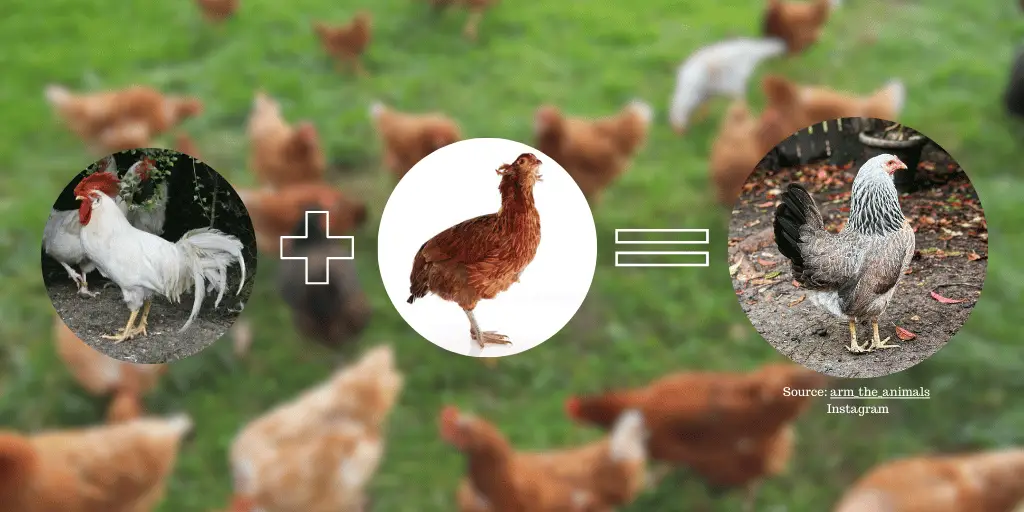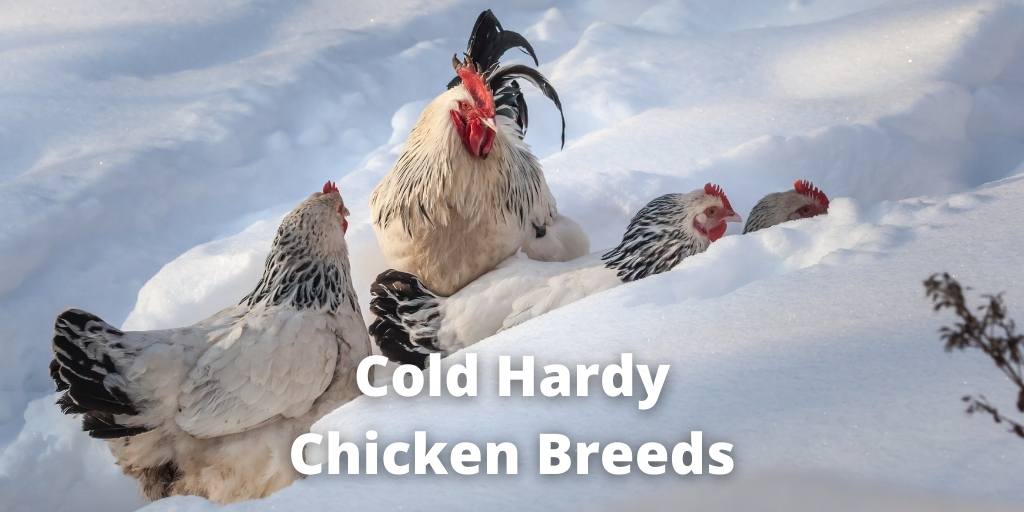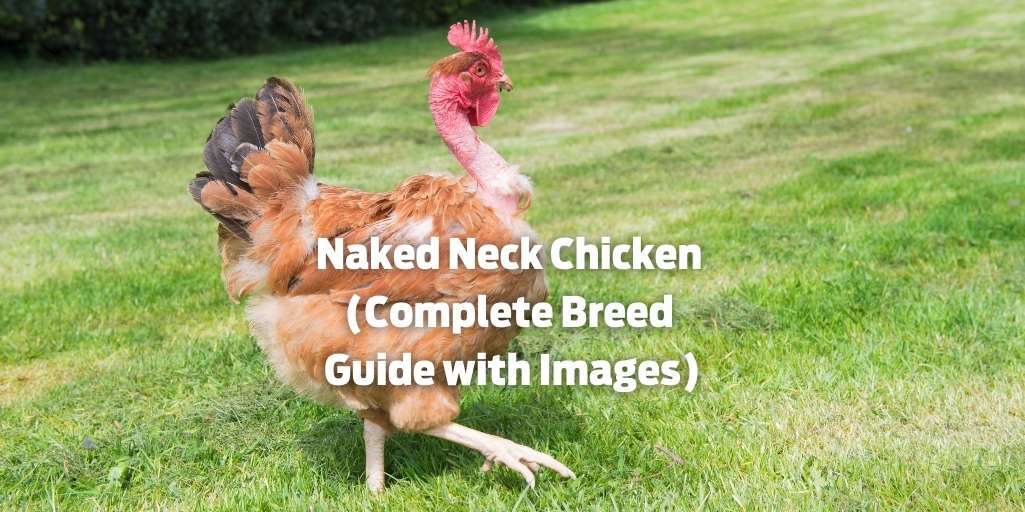Have you ever heard about the Prairie Bluebell Egger chickens? If not, this guide will tell you about this soft blue egg layer.
Visualize the delight of collecting fresh eggs and discovering beautiful, soft blue shells among the browns and whites.
This lovely wonder is usually the politeness of the Prairie Bluebell Egger, a chicken breed that has caught the hearts of backyard poultry enthusiasts across the United States.
Praised for their unique egg color and other desirable traits, these chickens have become famous for those aiming for both looks and productivity in their flock.
The Prairie Bluebell Egger is a hybrid chicken breed developed through a cross that provides characteristics of its parentage.
This guide provides information about the Prairie Bluebell Egger, including its history, physical characteristics, temperament, egg-laying prowess, and the essentials of caring for this lovely hybrid chicken.
The History and Origin of the Prairie Bluebell Egger
The Prairie Bluebell Egger is not a traditional breed. It is a newly added hybrid chicken to the poultry world.
Its origins are in Popular Hoover’s Hatchery, which developed and launched the Prairie Bluebell Egger in January 2019.
Prairie Bluebell Egger hybrid is developed by selective breeding breeders in Hovers Hatchery.
The aim was to combine specific, desirable traits from two distinct parent chicken breeds to create a stronger and more productive hybrid.
This hybrid chicken was developed by crossing the Araucana and the White Leghorn chicken breeds.
The Araucana chicken is from South America and is famous for its unique ability to lay blue eggs.
This unique appearance is because of a pigment called oocyanin, which is deposited during chicken egg production.
However, pure breeds of Araucanas have faced challenges in history, including a semi-lethal gene associated with their characteristic ear tufts, which causes poor egg hatching rates.
The second parent breed is the White Leghorn, an excellent white egg-laying chicken breed.
People also know these chickens for their active and sturdy nature. Hoover’s Hatchery aimed to breed chickens that lay many blue eggs, are hardy, forageable, and have sound temperaments.
The Prairie Bluebell Egger quickly became popular because this hybrid chicken fulfilled the need for a reliable blue egg layer with a healthier gene.
Appearance: What Does a Prairie Bluebell Egger Look Like?
A Prairie Bluebell Egger chicken is medium-sized and typically weighs 4 to 5 pounds as an adult.
Compared to larger dual-purpose chickens, this is a lightweight hybrid. The Prairie Bluebell Egger’s wide range of colors and patterns makes it striking.
This hybrid heritage gives each bird a unique and beautiful look, resulting in vibrant diversity. You’ll often find feathers in blue, black, or splash; splash feathers have a base color with unpredictable white patches.
A natural camouflage-like, wild-type, or partridge pattern is often seen. Beyond the standard colors, Prairie Bluebell Eggers can display beautiful but uncommon colors such as gray, gold, light smoke, and white frost.
The feather patterns can be complex, often displaying a light lacing that enhances their visual appeal. A uniform physical trait across the breed is the existence of a pea comb, a low-profile comb that lies close to the head.
Fluffy cheeks, sometimes seen in some flocks and hinting at Araucana bloodlines, are inconsistent and may be less apparent in later generations.
Their heads are generally small; people have noted a rose comb in some contexts, but the pea comb is more reliably reported.
White ear lobes are a common visual characteristic of blue egg-laying chickens like the Prairie Bluebell Egger. Their tails enhance the image of skill and swiftness, which can be tall and fan-like.
Keep in mind that baby chick leg colors aren’t uniform.
Prairie Bluebell Egger Key Characteristics
| Characteristic | Description |
| Mature Weight | 4-5 lbs |
| Comb Type | Pea |
| Egg Color | Blue, with variations to green or brown |
| Eggs Per Year | 200-280 |
| Temperament | Active, Alert, Athletic |
| Hardiness | Cold and Heat Hardy |
| Broodiness | Rarely |
| Feather Colors | Wide variety including blue, black, splash, wild type/partridge, gray, gold, etc. |
Temperament and Personality: Understanding Their Nature
The Prairie Bluebell Egger is known for its active, alert, and athletic disposition.
Their energy makes them great foragers, quickly finding food when available. The natural foraging ability of free-range chickens can significantly lower feed costs and improve their quality of life.
These chickens show a good level of adaptability to various living situations. Their foraging and alertness help them thrive in free-range environments, allowing them to explore, navigate, and avoid predators.
However, coop life is adaptable, particularly with sufficient space for exercise and natural behaviors.
Prairie Bluebell Eggers are friendly towards humans and may even learn to respond to their names, especially when given treats.
However, they possess independence and might not be as overtly cuddly as other breeds. They usually keep themselves safe, preferring to watch and interact as they see fit.
Despite their independent nature, their docile temperaments make them ideal for first-time chicken keepers and families.
Prairie Bluebell Eggers integrates well within a flock setting. Their alertness and agility contribute to a high survival rate in mixed flocks because of their quick reactions to potential harm.
Most chicken breeds coexist peacefully with them, making them a versatile addition to a flock. These hybrid chickens also benefit significantly from their notable intelligence, which helps them avoid predators.
Furthermore, their below-average noise level is often a characteristic that nearby owners appreciate.
Egg Production of Prairie Bluebell Eggers
People love Prairie Bluebell Eggers mainly because they lay stunning blue eggs.
These captivating, colorful eggs enhance any egg basket. A Prairie Bluebell Egger hen lays between 200 and 280 eggs per year.
Some chicken keepers report higher egg production than average because of reasonable care and providing proper nutritional feed.
The typical egg size for Prairie Bluebell Eggers is medium. Many owners report large eggs, especially during peak laying and with good nutrition. Egg size might vary because of hen age, diet, and genetics.
Shades of the blue eggshell color range from a soft sky blue to a vivid powder blue. Although blue is the standard color, remember that some eggs may be greenish or brownish.
Eggshells get their blue color from oocyanin pigment deposited during early development. Interestingly, while most Prairie Bluebell Eggers lay blue eggs, some may lay white eggs, so buyers should know this.
Life Expectancy: How Long Do Prairie Bluebell Eggers Live?
A Prairie Bluebell Egger’s lifespan is 5-10 years, varying by factors like diet and environment.
Because they’re hybrids focused on egg-laying, Prairie Bluebell Eggers might not live as long as some heritage chicken breeds.
This is because the energetic demands of consistent egg laying can strain their bodies over time.
But, chicken owners say these chickens still live a pretty long time. People say their hens keep laying for ages, some up to five years or more.
Breed Standards and Varieties: What is Recognized?
The Prairie Bluebell Egger (Hoover’s Hatchery) has no official breed standards (APA, ABA). Purebreds have established traits, but hybrids are specifically crossbred to produce desired characteristics.
Even without official rules, Prairie Bluebell Eggers usually have some common traits. They usually lay blue eggs, but the color changes, and sometimes they lay other colors.
They usually have a pea comb and are lightweight, around 4-5 pounds. Their temperament is active, alert, and athletic, and they exhibit a strong inclination for foraging.
Prairie Bluebell Eggers are known for their incredible variety of colors and patterns. Because of their hybrid nature, there’s vibrant diversity, leading to a visually interesting flock where each bird looks unique.
The breed is characterized by its wide variety of colors, despite the lack of standardization for specific colors.
While Prairie Bluebell Eggers rarely have muffs, tufts, or beards, fluffy cheeks can appear in some, showing Araucana heritage.
Special Qualities and Benefits
Raising Prairie Bluebell Eggers offers many appealing qualities and benefits. Their consistently beautiful blue eggs are a top highlight, a delightful and unique addition to any collection.
Because they’re so active and athletic, they’re excellent at foraging – it’s fun to watch, and it saves money and keeps pests down.
These chickens are challenging birds, doing well in hot or cold weather, so they’re suitable for many places.
Because of their small size, these birds require less feed than bigger chicken breeds, resulting in lower upkeep expenses.
They’re usually pretty docile and easy to manage, so they’re great for everyone, even families with kids.
The alertness and agility of Prairie Bluebell Eggers offer natural protection from predators, especially in free-range environments.
They don’t go broody often, so they lay eggs regularly instead of taking long breaks. The stunning variety of colors and patterns in their feathers enhances the beauty of any backyard flock.
Common Problems and Challenges in Raising Prairie Bluebell Eggers
Prairie Bluebell Eggers are rewarding, but there are some potential problems to consider.
Hybrids show some variability in appearance and the precise shade of blue in their eggs. This natural variation is something to remember if you aim for a very uniform flock.
Compared to some heritage breeds, they may have a slightly shorter lifespan, possibly because of the energy needed for their high egg production, inherited from White Leghorns.
Additionally, a few Prairie Bluebell Eggers, despite their breeding, lay white instead of blue eggs, which may upset those seeking blue eggs only.
Like other chickens, Prairie Bluebell Eggers are prone to common poultry diseases, including external parasites such as mites and lice.
Although these chickens were bred to avoid some Araucana problems, they still need good care.
Caring for Your Flock: Essential Needs of Prairie Bluebell Eggers
Prairie Bluebell Eggers need proper care to stay healthy. They need a safe coop with protection from predators and the weather, plus good ventilation for fresh eggs.
They need a safe coop to protect them from weather and predators, plus good air flow to stay healthy.
Although they prefer to roam freely, if they are kept in a run, you must provide a sufficiently large enclosure.
High-quality layer feed is crucial for maintaining a balanced diet and supporting egg production.
Providing a constant supply of fresh, clean water is also essential. Letting them forage naturally is helpful.
Regular health checks are necessary to monitor for parasites or illness. Preventing disease spread requires strong biosecurity practices, mainly when introducing new birds.
Reputable hatcheries typically vaccinate chicks against common diseases like Marek’s disease.
Frequently Asked Questions About Prairie Bluebell Eggers
Do Prairie Bluebell Eggers lay the brightest blue eggs?
Although known for their beautiful blue eggs, the intensity of the blue color varies among individual hens. Depending on the parent breed, the color may be a softer sky blue or a more vibrant, almost robin’s egg blue. The Whiting True Blue breed is known for laying eggs that are a more vibrant shade of blue.
Do Prairie Bluebell Eggers all lay jumbo eggs or medium eggs?
Many classify Prairie Bluebell eggs as medium. However, many owners report their hens lay large to jumbo eggs, especially when they’re at their peak and well-fed.
What feather colors do Prairie Bluebell Egger chicks come in?
This breed’s chicks display a delightful range of colors. You could find blue, black, splash, or wild-type/chipmunk chicks. Gray, gold, light smoke, and frosted white are less common, yet equally charming colors that may also appear.
Are Prairie Bluebell Eggers clean-faced or bearded?
Prairie Bluebell Eggers sometimes have clean faces, but other times they have fluffy cheeks, which are also called beards or muffs. However, it looks like Hoover’s Hatchery might prioritize cleaner-faced birds in their breeding program.
How many eggs do Prairie Bluebell Eggers lay per year?
Prairie Bluebell Egger hens typically lay 200 to 280 eggs a year. In perfect conditions, some very productive hens could produce more than average.
Conclusion: Embracing the Prairie Bluebell Egger
Looking for a backyard chicken that lays blue eggs and has a lively personality? The Prairie Bluebell Egger fits your backyard coop.
They’re a rewarding breed to raise because they consistently lay beautiful blue eggs, forage actively, and have sound temperaments.
Some natural variation in appearance and egg shade exists, but it only adds to their unique attractiveness.
From newbie to expert, the Prairie Bluebell Egger offers a unique and fun experience for poultry enthusiasts.
Because of their hardiness and adaptability, they’re welcome additions to flocks in various weather.
The Prairie Bluebell Egger offers beauty, productivity, and the daily pleasure of blue eggs.
Are you raising this hybrid chicken? Comment and share your experience about the Prairie Bluebell Egger chickens.


